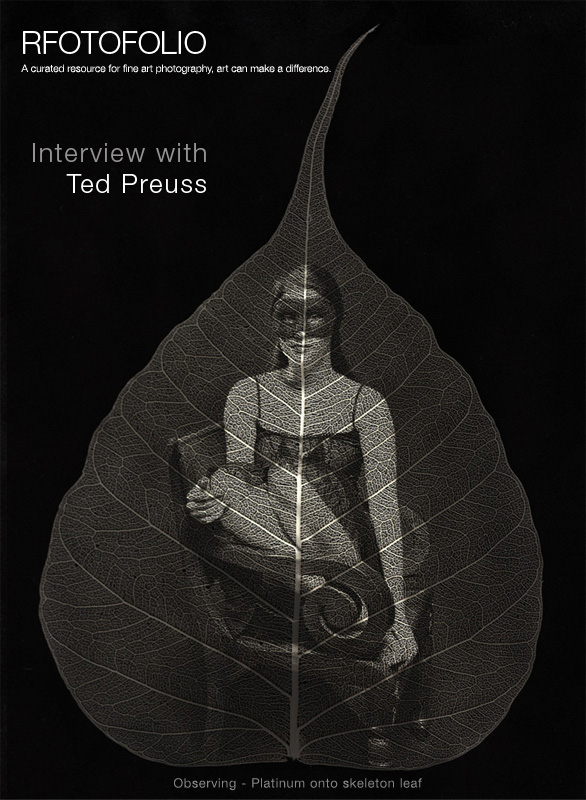
OBSERVING © TED PREUSS
Today we are pleased to the work and words of Ted Preuss. Ted captures beauty and craft in his images.
Would you please tell us a little about yourself?
I am a traditional black and white photographer based in Chicago, Illinois. I was born in Denver, Colorado where I spent many of my summers in the Rocky Mountains where my passion for photography started.
How did you get started photography?
I picked up my first camera at the age of seven and fell in love with photography. At the age of 22 I started my career as a freelance architectural photographer for a decade in Boston and San Francisco. It wasn’t until 2003 in Chicago that I decided to pursue photography as an art form.
Which photographers and other artists work do you admire?
I truly admire painters like Frederic Leighton and John William Waterhouse for their composition and dedication to details. But being a photographer, I have always admired the simplicity of Ruth Bernard and Imogen Cunningham.
Would you share with us an image (not your own) that has stayed with you over time?
Such a hard question, there are so many images that have inspired me over time. I would say Georgia O’Keeffe, Hands 1918, Alfred Stieglitz.

GEORGIA O’KEEFFE, 1918, ALFRED STIEGLITZ
If no one saw your work, would you still create it?
Definitely yes, I create my work mainly for my own enjoyment. But when others find it captivating it’s always a delight. I view every image as if it’s going in my own home. But it’s always nice to see my photographs end up on someone else’s walls.
Please tell us about your process and what is the perfect day for you.
I enjoy working with 19th century processes, but my favorite is platinum palladium. This process involves mixing small amounts of platinum and palladium with a light-sensitive solution containing ferric oxalate. This mixture can then be spread onto the paper surface with a brush then left to dry. After the emulsion is completely dried, the paper is placed in contact with a negative and then exposed to ultra-violet light for about 4 minutes. Finally, the exposed print is processed, and then cleared by washing out the ferric oxalate with hydrochloric acid, then finished by washing for an hour in water and dried.
A perfect day in the darkroom starts the day before when I coat my paper with platinum palladium mixture. The humidity and temperature needs to be perfect in the room before coating. Once my coating has dried under the same conditions for 12 hours. I start the next morning off with a cup of coffee and some good music while setting up for a day of printing. With a little luck each print is exposed perfectly and my coating is flawless, now that’s a perfect day!
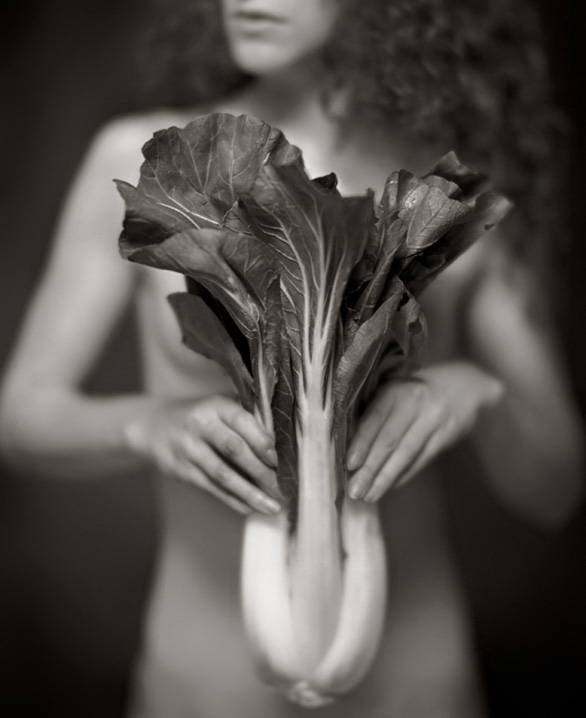
BOK CHOY © TED PREUSS
What challenges do you face as an artist?
I think it’s mainly to find a unique character in my subject, no matter if it’s a person or still-life, and not to over think the photo, as this always get me in to trouble. Another challenge is to educate new collectors about the value of my printing method and handmade original art.
You are working on a new project involving the photography of your great-grandfather. Would you like to share this experience with us?
My great-grandfather (Albert Augustus Jeaneret) was a jeweler and had a couple of patents in eyeglass design. He also enjoyed photography. I recently started printing a few of his 4×5 negatives from his travels around the U.S. in the early 1900s. I’m not sure where this project is going since I only have a hand full of loose negatives.
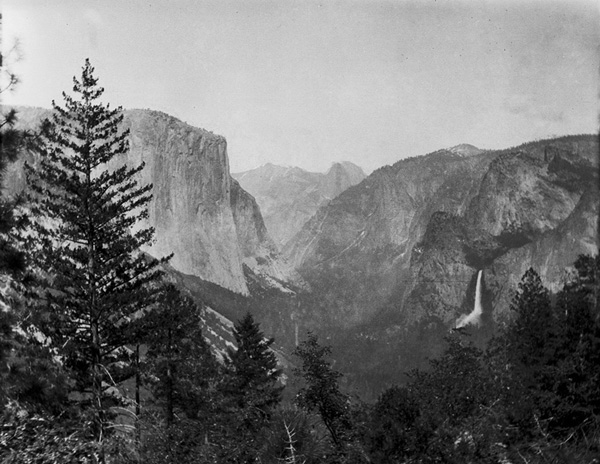
YOSEMITE 1915 © ALBERT AUGUSTUS JEANERET
If you could go spend the day with another photographer living or passed who would it be?
That’s a hard question since there so many I would like to spend a day with. Anne Brigman would be high on the list for her dramatic pictorial photography followed by Ruth Bernhard for her simplicity.
How do you view this time in the history of photography?
I think it’s an exciting time for photography in history. Digital has change the landscape in fine art photography extending the possibilities of creativity. It’s also exciting to see more photographers experimenting with alternative processes from the 19th Century.
How do you overcome a creative block?
I guess I have a creative mind, I’m always observing my surroundings. When I’m working with a new subject I have the opposite problem, not enough time in the day. But when I do have a creative block it’s usually caused by too many distractions, like bookkeeping or printing. Usually a long walk helps me focus on ideas. Cleaning the studio and organizing the darkroom is another good way.
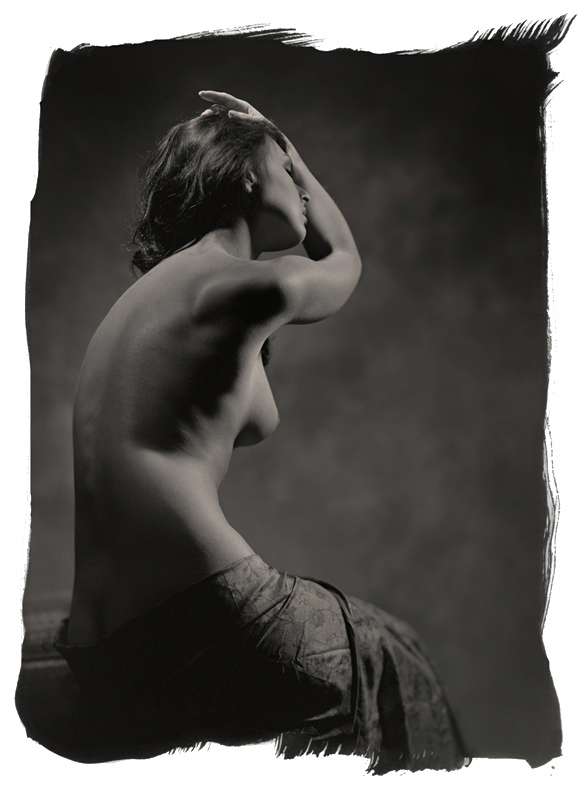
Bather © TED PREUSS
What do you hope the viewer takes from your images?
I would like the viewer to see my images as poetic and timeless. I hope the viewer is drawn in by the simplistic beauty.
In the words of photographer Diane Arbus, the image becomes “a secret about a secret. The more you know, the less it tells you.”
Would you like to share a story about one of your images?
One day I had excess platinum palladium mixture and no paper to coat. I started looking for something to coat and noticed a skeleton leaf I saved from outdoors. So I went ahead and coated it with my mixture and completed the rest of the process just like I do with paper. After it dried it was hard to see an image. I tossed it back onto the windowsill. About a week later one day the leaf fell onto a black covered book . . . it worked! With the complex pattern of hollow veins the leaf needed a black background for the image to appear.
There is an upcoming exhibition with my leaves at Mike Wright Gallery in Denver, CO.
March 12th – April 16th 2015
Mike Wright Gallery.
How does your art affect the way you see the world?
Photography has become the primary method of expressing my creative vision. As an artist, I’m always viewing the world as a photograph. I spend more time looking at my surroundings and the light. I feel it makes me appreciate the world a little more.
Where can we see your work, and would you like to share any upcoming projects?
I do offer private viewings at my studio/gallery in Chicago at Helmuth Gallery.
You can always view my work online at Ted Preuss.
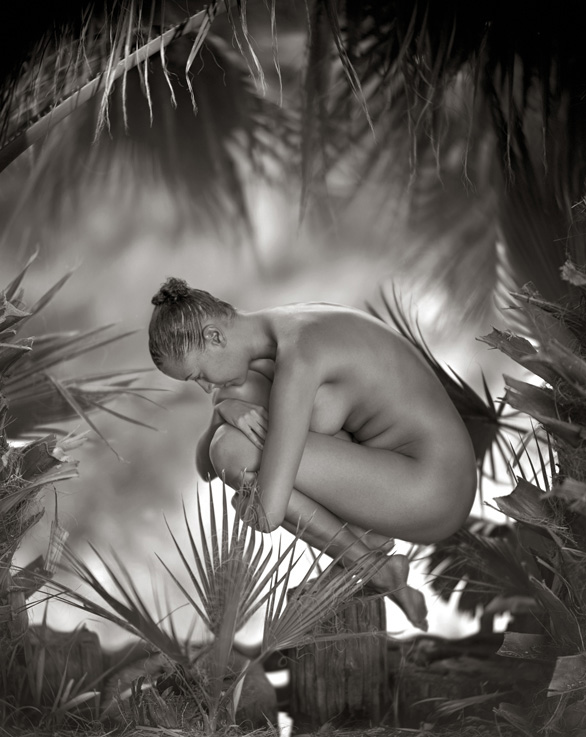
Desert Oasis #1 © TED PREUSS
For additional information visit: RFOTOFOLIO.ORG
















